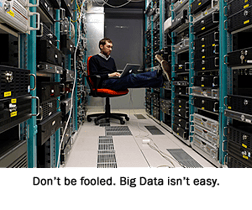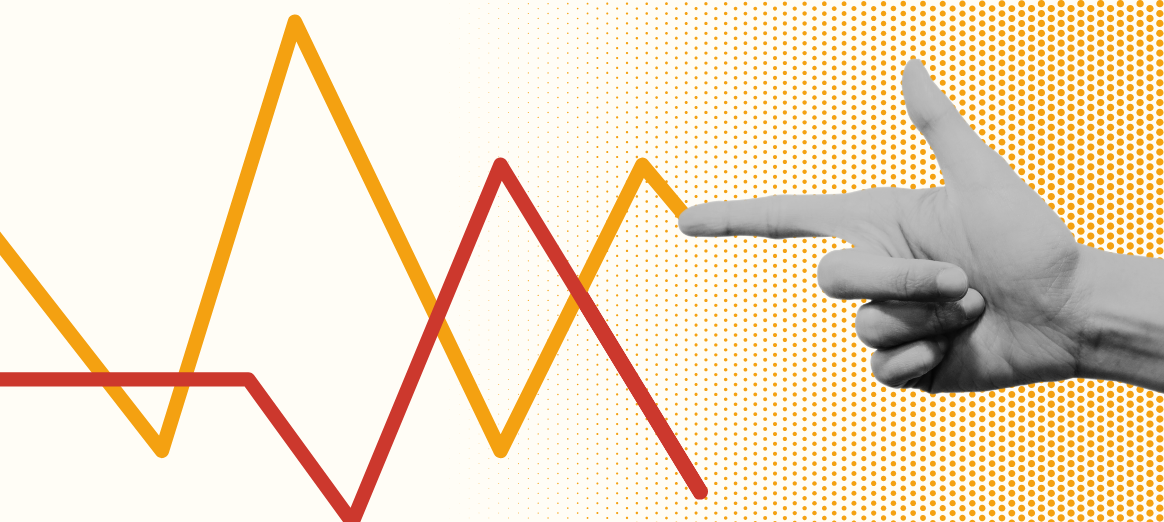Do you think it’s possible for a company to do a good job meeting customer needs if they don’t try to understand what those needs are? Of course not.
Yet marketers at the average Fortune 1000 company woefully underuse data when trying to answer these questions, depending on it for just 11% of all customer-related decisions.
The other 89% of customer-related decisions? According to the CEB study referenced in this Harvard Business Review post, they’re based on highly qualitative inputs such as intuition about customers, colleague input, and past experience. Is it any wonder the average company struggles with customer-centricity - or that customer experience is such a key strategic issue?
What’s funny (in an ironic sort of way) is the concurrent hype surrounding Big Data. Yes, it IS a great way to better understand customers and make more informed, customer-centric decisions. But what's the point if you don't use it? Or even worse, if you try to use it and reach the wrong conclusions because your team doesn't have the expertise to accurately analyze it?
A Wealth of Inexperience
Given how much data is available to us all – and how most business people appear to be immersed in this data – it’s easy to assume that the ability to get answers from it is becoming second nature. But the reality couldn't be more different, because making meaningful decisions based on this data and having an aptitude for analyzing it are two very different things.
And that’s the big take-away from the HBR article, other highlights of which include:
- 44% of the 800 marketers surveyed missed 4 out of 5 questions in a general statistics quiz. (Just 6% got them all right - as a result, it’s unsurprising that only 5% own a statistics textbook).
- 11% of the marketers were hyper-focused on data and dashboards. Not coincidentally, these people were considered by their managers to be severe underperformers who are constantly adjusting course after seeing a new data point.
- Only about 10% of marketers excel at filtering out the noise that’s part and parcel of Big Data efforts.
The truth is, if more marketers were versed in statistics 101, they’d know you don’t need data on an entire customer population to generate accurate summary statistics and make decisions based on the observation of basic patterns.
To summarize, the vast majority of marketers ignore data when it comes to making customer-related decisions. And the majority of those who do use data to inform these decisions do so poorly – negatively impacting both their customers and their company’s performance.
What’s Most Important Is Gathering The Right Data – Not Some Arbitrary Quantity Of It
I’m a big believer in Big Data. But I also think there’s significant misunderstanding about what Big Data means. It’s not just about ready access to more and bigger data sets. Nor is it about more complex dashboards and fancier visualizations.
Big Data is really just lots and lots of little data that can be handled and analyzed at scale, in a cost-effective manner. It’s about uncovering the patterns one could never hope to observe normally, separating a little bit of extremely important wheat from 20,000 tons of chaff – then figuring out ways to leverage the heck out of your newfound insights.
So, in the learn-to-walk-before-you-run category, I’m here to tell you – assuming your firm falls into the 89% group – that your company, your customers, and their experiences would be significantly better if you try your hand at “Small Data” first.
It’s Not The Size Of Your Data, It’s How You Use It: The Power of Small Data
The most telling aspect of the HBR article is that first statistic – if only 11% of customer-related marketing decisions are being guided by data, then most marketers haven’t even tapped into the potential of Small Data yet. In this environment, any attempts to leverage Big Data are essentially a waste.
 When I talk about Small Data, I’m referring to structured, quantitative research on a subset of your customers – for example, customer satisfaction and customer experience surveys, or analysis of purchase patterns at the retail store level.
When I talk about Small Data, I’m referring to structured, quantitative research on a subset of your customers – for example, customer satisfaction and customer experience surveys, or analysis of purchase patterns at the retail store level.
This is data you can easily collect and analyze in Excel on your desktop vs. a need for the giant, in-house “clusters” of powerful servers used for crunching massive amounts of data that are a hallmark of Big Data efforts.
It’s About Better (Not Bigger) Data
Big Data lives at the intersection of some very complex disciplines including statistics, analytics, data quality, and gathering and more; Big Data is like getting hit in the face with a fire hose. Small Data, on the other hand, is more about making use of the data you almost certainly collect already – and making decisions based on what you find out.
In my customer experience consulting practice, I talk to companies all the time that fail to take action on the data they collect. But once they learn how to make that leap, they’re like a whole new organization. Why such a dramatic transformation?
Because the same reasons marketers “flunk” Big Data are why they can make such huge strides with Small Data. By combining intuition and past experience to ask questions of existing customer data sets (or collecting new voice of the customer data) marketers are able to leverage both their expertise and statistically valid data sets to get at the answers to their customer-related questions.
For most firms, Small Data is more than enough to get at truly meaningful data with the ability to drive dramatic, customer-centric results. What doesn't work is the course currently taken by the 89% of marketers surveyed in the CEB study – ignoring data of any size.
When it comes to leveraging data to drive customer insight, size itself doesn't matter – what does matter is collecting and analyzing the right data, of whatever size, that helps you make intelligent customer-related decisions.
This blog originally ran on CMO.com, where Michael Hinshaw writes the weekly "Get Customer-Centric" blog.


